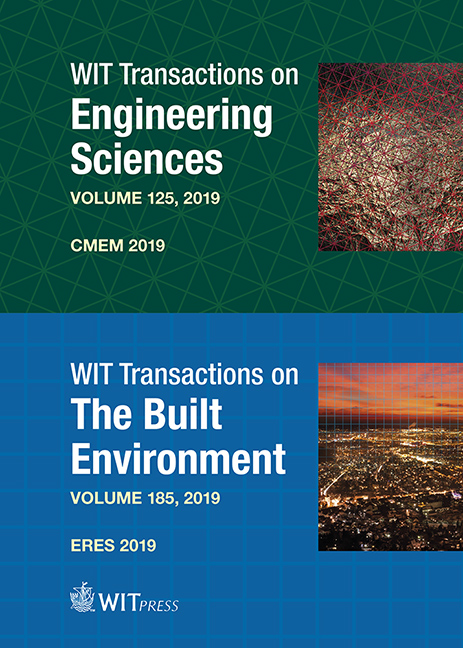COMPRESSIVE STRENGTH CLASSIFICATION OF LIGHTWEIGHT AGGREGATE CONCRETE USING A SUPPORT VECTOR MACHINE MODEL
Price
Free (open access)
Transaction
Volume
125
Pages
11
Page Range
173 - 183
Published
2019
Size
470 kb
Paper DOI
10.2495/CMEM190171
Copyright
WIT Press
Author(s)
ANTONIO JOSÉ TENZA-ABRIL, ROSANA SATORRE-CUERDA, PATRICIA COMPAÑ-ROSIQUE, FRANCISCO JOSÉ NAVARRO-GONZÁLEZ, YOLANDA VILLACAMPA
Abstract
Lightweight aggregates (LWA) are used to produce low-density concretes required for building applications. Lightweight aggregate concrete (LWAC) is a multi-purpose material for construction, which offers technical, economical and environment benefits, and it is produced by replacing the normal-weight aggregates with LWA, depending upon the requirements of density and strength. LWAC is a complex composite material, and a model of its compressive strength must be highly nonlinear because it is very sensitive to its ingredients, so modelling its behaviour is a difficult task. Many studies have tried to develop accurate and effective predictive models for LWAC compressive strength. In this study, a support vector machine (SVM) learning algorithm is used to propose a model to classify the compressive strength of a wide range of LWAC. A dataset of 241 different LWACs were used for classifying the compressive strength into six different classes (from low-strength to high-strength) using different variables – quantity of cement, water and LWA in the dosage and density of the LWAC produced. The results show that increasing the variables means the model becomes more accurate up to approximately an 80% rate of success. The SVM model proved to be a significant tool to classify the compressive strength of LWAC contributing to engineers avoiding costly experimental trial tests.
Keywords
lightweight concrete, aggregate, vibration, classification, modelling





